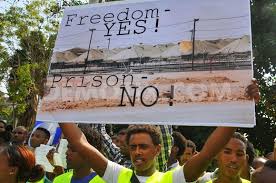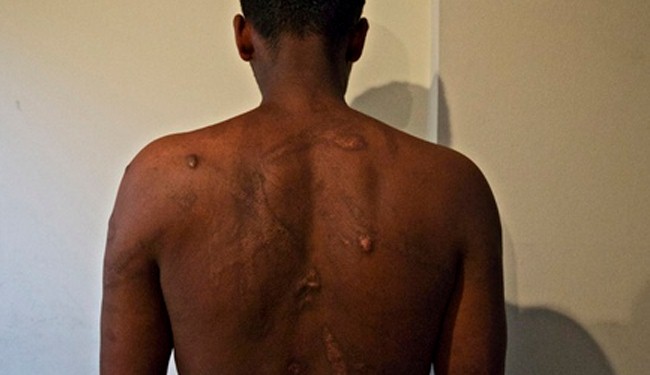Our Special Correspondent
Saba Makeda
Somewhere in Eritrea, 13th January 2014
(5 – end)
The first part of this story, Saba Makeda writes
on the Eritrea Constitution
that the dictator didn’t want to implement
You can find the article here
In the second part our reporter tells
how the dictatorship killed the free press.
You can find the article here
The third part is dedicated
To the prisons, military camps, schools. Here
The forth speaks about children and human rights
And you can find here
Other marginalisation
On the issue of marginalisation various minority groups within Eritrea I will limit myself to quoting Dr Alexander Naty: “We only have ‘dance democracy’ in Eritrea. The minority groups are allowed to make public appearances at government hosted cultural events. All other minority rights and political liberties are, however, brutally crushed”. (5)
Shoot to kill policy
On 22 December 2014 the first reports of the death of 13 young Eritreans most of them children started to reach the Eritrean websites. The deaths actually happened in September 2014 when a group of 16 young Eritreans, in an army truck, tried to cross the border into Sudan. Thirteen were killed among them daughter of Tesfahanes Hagos, Colonel, ex fighter, who searched for his daughters and pushed the regime to disclose what happened. The family has already lost 3 daughters? Will they lose a father? It is very likely as such is the track record of the Government in Eritrea
On a number of occasions in Asmara I have witnessed the Sawa round up and froze in my tracks as the soldiers chasing the young people released the safety on their AK 47’s. On one occasion I witnesses a soldier beating a young man who managed to get away. The soldier was reprimanded and told that he should have broken the young man’s legs…
 Such killing happen everywhere and in 2005 it happened in Asmara and it was photographed by Italian diplomat who described what he saw as follows: “I was parking my car in the centre of town when I was a truck on the other side of the road. Soldiers were pushing 20 or so boys onto the truck. I understood that is was a matter of a roundup of young people to be sent to the infamous and hated military training camp Sawa. One of the boys managed to wrestle himself free from the group and tried to escape across the road. He did not reach the other side of the road he was hit by a burst of sub-machine gun fire. Subsequently a man in uniform approached the victim and ended his life with a grace shot. The body of the boy remained in the street for over an hour. To me it seemed like a warning to those who tried to resist the order of the regime”. (6)
Such killing happen everywhere and in 2005 it happened in Asmara and it was photographed by Italian diplomat who described what he saw as follows: “I was parking my car in the centre of town when I was a truck on the other side of the road. Soldiers were pushing 20 or so boys onto the truck. I understood that is was a matter of a roundup of young people to be sent to the infamous and hated military training camp Sawa. One of the boys managed to wrestle himself free from the group and tried to escape across the road. He did not reach the other side of the road he was hit by a burst of sub-machine gun fire. Subsequently a man in uniform approached the victim and ended his life with a grace shot. The body of the boy remained in the street for over an hour. To me it seemed like a warning to those who tried to resist the order of the regime”. (6)
Makeda Saba
Makedasaba@ymail.com
5 The lasting struggle for freedom in Eritrea – Human Rights and Political Development , 1991-200; Kjetil Tronvoll
6 Corriere Della Sera 25 October 2005 – Massimo A. Alberizzi


